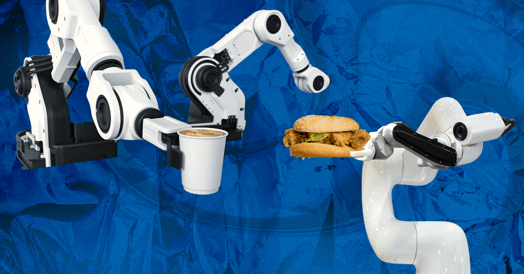Humans are always delighted by the idea of getting food from machines — whether it’s the old automats of the 1900s or a replicator from “Star Trek.”

But what’s the difference between a restaurant and what is functionally a vending machine? If it’s that a human cooks or serves the food, modern restaurants have already transcended that.
For instance…
… McDonald’s makes you order on a screen and robot waiters are becoming ubiquitous (though it’s debatable if a table on wheels constitutes a “robot”), but there’s so much more:
- Sweetgreen just opened its eighth location using its automated “Infinite Kitchen” tech, which can assemble 500 salads in an hour. (Humans still prepare all the ingredients and interact with customers.)
- Walmart will open 20 robot-run restaurants in its stores after successful trial runs in Illinois and Georgia. The robot, ADAM, makes coffee and tea.
- CaliExpress, which we visited earlier this year, has leaned into its “burgers cooked and served by robots” gimmick by humanizing its machine employees with names.
Asian countries are showing greater urgency in restaurant automation, per Restaurant Business. In Tokyo, E Vino Spaghetti’s automated pasta robot can make 90 meals in an hour.
Not only is the technology cool, but the demand for restaurants is outpacing the supply of workers; more than 30% of the population in China, Japan, and South Korea will be 65+ by 2050.
So, what’s a vending machine and what’s a restaurant?
The answer is probably that all food service will eventually fall somewhere on the vending machine-restaurant spectrum.
- The box that the security guard in Terminator 2 got coffee from is a vending machine, but the deli from When Harry Met Sally is a restaurant.
Chipotle, with its vaguely terrifying avocado-chopping machine, is somewhere between them.
